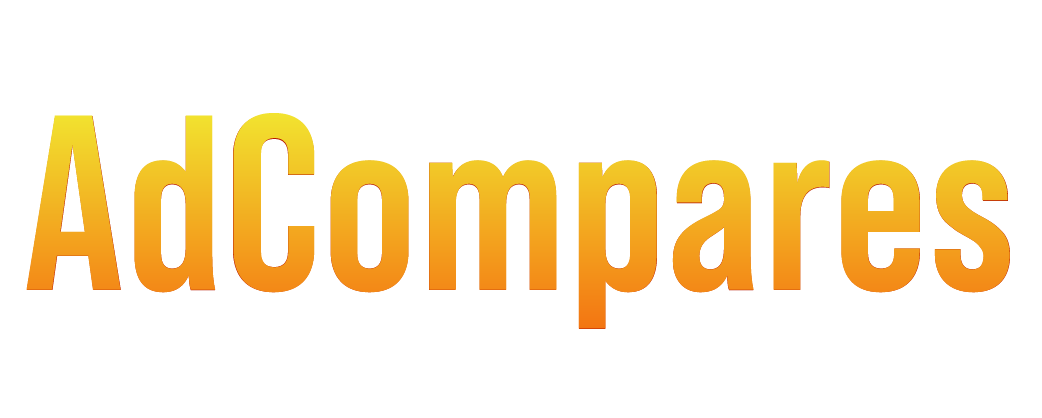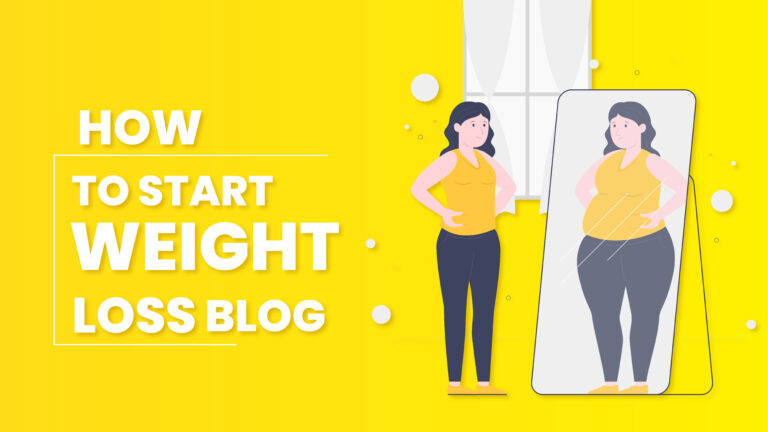Starting a weight loss blog in 2026 demands more than motivation — it demands precision, specialization, and a clear strategy that cuts through a saturated health market. Readers ignore generic weight loss content. They search for creators who document structured systems, tested methods, and data-aligned frameworks that improve actual results. A modern weight loss blog attracts attention when it delivers niche depth, clear evidence patterns, measurable progress structures, and practical routines that users can replicate without confusion.
The digital fitness ecosystem in 2026 includes AI-driven coaching apps, personalized nutrition dashboards, wearable sensors, metabolic trackers, and community-based support networks. A creator who understands these tools gains an advantage because readers follow content that integrates technology, psychology, and personalized structure. This guide explains exactly how a blogger establishes topic authority, configures a scalable platform, produces high-value content, implements search engine optimization, and builds monetization channels inside a competitive field.
1. Define a Focused Niche for the Weight Loss Blog
To define a weight loss niche, creators narrow the content scope into a measurable category that reflects user intent. A fixed niche increases topic relevance, improves semantic structure, and strengthens authority signals across the content ecosystem. Search engines classify niche blogs as specialized resources when their topics remain aligned with a consistent entity graph.
- Fitness-Centered Weight Loss Niches:Fitness-based weight loss niches highlight structured exercise routines, progressive strength training systems, functional movement patterns, and metabolic conditioning frameworks. Audiences engage with guides that document beginner workouts, low-impact plans, hypertrophy routines, and HIIT circuits. Fitness entities like resistance bands, kettlebells, heart-rate zones, and rep schemes improve topical density. Video-supported instructions increase retention and user trust.
- Nutrition and Meal Structure Niches:Nutrition-driven blogs focus on meal planning frameworks, calorie distribution systems, macro tracking strategies, and evidence-supported eating patterns. These blogs explain nutrient density, fiber intake, glycemic load, and hydration strategies. Popular diet formats include ketogenic diets, Mediterranean diets, plant-based plans, intermittent fasting systems, and low-glycemic eating. Users prefer meal templates, grocery frameworks, and step-wise recipe breakdowns.
Mindset and Behavioral Weight Management Niches:Mindset-based blogs analyze behavioral triggers, emotional eating cycles, habit loops, and motivational frameworks. Content includes identity reinforcement systems, discipline strategies, goal segmentation models, and relapse-prevention structures. The psychology niche gains high engagement due to its relevance to long-term adherence, cognitive restructuring, and stress-eating management. - Technology-Integrated Weight Loss Niches:Technology niches highlight digital devices, biometric tracking systems, AI-based coaching applications, automated food logs, metabolic analyzers, and wearable sensors. Entities such as Fitbit, Garmin, Oura Ring, Whoop, Cronometer, and MyFitnessPal add technological depth. Readers engage with comparison reviews, calibration guides, sleep optimization protocols, and data interpretation instructions.
- Demographic-Specific Weight Loss Niches:Demographic niches classify users by lifestyle attributes, health status, or age groups. Popular segments include weight loss for seniors, weight loss for postpartum mothers, weight loss for office workers, weight loss for teenagers, and weight loss for men over forty. These segments demand specialized content due to variable mobility needs, hormonal patterns, and environmental pressures.
2. Select a Scalable Blogging Platform for Long-Term Growth
A blogging platform functions as the structural base that supports layout systems, publishing workflows, SEO attributes, and feature integrations. A scalable platform maintains loading stability, supports structured markup, and processes high-volume content.
WordPress as a Primary Platform
WordPress remains a dominant content management system because it supports plugin ecosystems, schema tools, theme libraries, and flexible hosting integrations. WordPress handles structured data formats, performance plugins, and custom taxonomy systems. Plugins like Rank Math support metadata, breadcrumb paths, and internal link automation.
Wix as a Visual Builder
Wix operates as a drag-and-drop builder with integrated hosting, template libraries, and automated optimization tools. It benefits beginners who require simplified workflows but offers fewer advanced configurations.
Squarespace for Aesthetic-Heavy Blogs
Squarespace provides responsive templates, visual layouts, and built-in design modules. The platform suits brands that emphasize visual cohesion, lifestyle photography, and clean user interfaces.
Medium for Community-Driven Publishing
Medium offers built-in readership exposure, highlighting algorithmic distribution and engagement metrics. However, Medium limits technical SEO control and monetization independence.
Ghost for Professional Writers
Ghost supports fast publishing speeds, clean markup, membership systems, email integration, and simplified technical structures. The platform suits niche experts who prefer minimal interfaces and paid content structures.
3. Select a Domain Name that Supports Branding and Search Precision
A domain name acts as a semantic identifier that signals relevance, authority, and branding strength. Effective domains maintain clarity, short length, and contextual alignment.
Domain Selection Criteria
Clear domains reflect the blog theme, display lexical simplicity, and avoid ambiguous structures. Domains with weight-loss-linked keywords increase immediate thematic recognition. Short domains lower user recall friction. Names with predictable spelling reduce navigation errors.
Brand-Driven Names
Brand names strengthen identity and memorability. Examples include LeanPattern, FitResetMethod, BalancedMacrosLab, MindTrimSystem, or ActiveMetabolismHub. A brand-aligned domain anchors future products, emails, and social media profiles.
Keyword-Reinforced Names
Keyword domains include structured terms like weight, diet, fitness, fat-loss, or meal-plan. Structured keywords strengthen thematic cues but require branding balance.
4. Configure the Blog Infrastructure
Blog configuration establishes performance standards, structural stability, and content delivery optimization.
Register Domain
Domain registrars like Namecheap and Google Domains provide DNS tools, WHOIS protection, and renewal automation.
Select Hosting
Hosting providers like SiteGround, HostGator, and Bluehost offer server resources, uptime benchmarks, SSL certificates, and caching layers. Hosting stability influences ranking signals due to load speed metrics.
Install the Platform
WordPress installations include theme setup, plugin activation, permalink structure configuration, and security hardening. Other platforms follow guided onboarding modules.
Choose a Performance-Optimized Theme
Themes like Astra, GeneratePress, or Kadence support lightweight code, mobile-first design, and optimized layout structures. A fast theme reduces cumulative layout shift, first-input delay, and largest-contentful-paint times.
Install Essential Plugins
SEO plugins structure metadata. Analytics plugins track user flows. Caching plugins improve server delivery. Anti-spam plugins secure comment sections. Backup plugins protect data integrity.
5. Create High-Quality Weight Loss Content
Content forms the core authority layer of the blog. High-quality content aligns with structured intent, factual accuracy, contextual detail, and semantically rich descriptions.
Research Weight Loss Topics
Use tools like Google Trends, SEMrush, Ahrefs, and BuzzSumo to identify high-demand topics. Topic clusters include calorie strategies, metabolic adaptation, gut health, resistance training basics, meal timing frameworks, and stress-related weight patterns.
Produce Actionable Guides
Actionable guides describe step-wise frameworks, defined sequences, ingredient lists, exercise progressions, weight tracking methods, and daily routines. Users follow guides with clear instructions and minimal uncertainty.
Use High-Quality Visuals
Visuals include exercise demonstrations, meal images, ingredient charts, macro ratio tables, and comparison diagrams. Visuals increase comprehension rates and improve user dwell time.
Maintain Posting Consistency
A content calendar structures publishing frequency, topic order, and cluster sequencing. Consistency strengthens user expectations and search engine trust.
6. Optimize the Blog for Search Engines
SEO optimization increases visibility, strengthens topic authority, and improves ranking stability.
Keyword Classification
Classify keywords into informational, transactional, and navigational categories. Long-tail keyword structures provide clear intent alignment. Entities like metabolism, macros, glycemic index, and VO2 max increase semantic density.
On-Page Optimization
On-page optimization includes heading hierarchy, internal links, structured summaries, bullet segmentation, descriptive alt text, and schema markup. Meta titles define topical relevance. Meta descriptions summarize content features.
Media Optimization
Image compression, descriptive filenames, alt text, and scalable formats reduce load times and support accessibility.
Mobile Optimization
Mobile-first indexing prioritizes responsive layouts, compressed scripts, and touch-friendly interfaces.
7. Promote the Blog Across Structured Channels
Promotion increases visibility, builds backlinks, and strengthens multi-platform authority.
Social Media Distribution
Platforms like Instagram, TikTok, Pinterest, YouTube, and Facebook distribute short clips, infographics, workout snippets, and meal visuals. Each platform supports specific content formats.
Email Marketing
Email tools like Mailchimp, ConvertKit, and Ghost send newsletters, lead magnets, meal plans, and progress trackers. Email lists maintain user retention.
Networking with Industry Creators
Collaboration with fitness trainers, nutritionists, behavioral coaches, and dietitians increases credibility. Guest posts and interviews expand reach.
Paid Advertising
Google Ads, Facebook Ads, and Pinterest Ads amplify targeted traffic.
8. Monetize the Weight Loss Blog
Monetization converts authority into structured income systems.
- Affiliate Marketing :Affiliate programs include supplement brands, fitness equipment providers, wearable technology companies, workout apps, and meal plan platforms. Product reviews strengthen conversion signals.
- Sponsored Content:Brands sponsor recipe content, workout series, product comparisons, and transformation stories.
- Digital Products:Digital products include ebooks, weight loss challenges, macro calculators, meal templates, and workout programs.
- Online Courses and Coaching:Courses teach structured systems. Coaching services guide behavioral change, diet plans, and fitness routines.
Conclusion
A weight loss blog in 2026 succeeds when it demonstrates topic depth, structural clarity, and evidence-focused information. A creator who defines a niche, selects a scalable platform, maintains performance optimization, produces research-aligned content, and implements a strategic promotion system builds trust with users and indexing systems. Long-term authority develops when posts maintain semantic consistency, technical accuracy, and actionable value across the content library. A structured monetization framework converts trust into predictable revenue through digital products, affiliate ecosystems, sponsorship integrations, and guided programs. The most effective blogs maintain relevance by adapting to new research, updated tools, and evolving user behavior patterns. This approach establishes a stable brand identity in a competitive weight loss environment.
Frequently Asked Quesitons (FAQ’s)
What is the most effective niche for a weight loss blog in 2026?
The most effective niche for a weight loss blog in 2026 is a specialized category that shows topic expertise. Fitness training systems, metabolic nutrition plans, behavioral mindset frameworks, and technology-integrated weight loss programs generate the highest engagement because they align with measurable user intent.
How do beginners create weight loss content that ranks?
Beginners create rankable content by using structured guides, evidence-based explanations, entity-focused keywords, internal linking systems, and clear instructional frameworks. High-value visuals, step sequences, and defined outcomes increase content relevance and search visibility.
Which platform supports the best SEO for weight loss blogs?
WordPress supports the best SEO because it provides metadata control, schema tools, caching plugins, structured categories, and custom taxonomy systems. The platform integrates Rank Math, Yoast, WP Rocket, and analytics plugins that strengthen search performance.
How does a weight loss blog gain authority in 2026?
A weight loss blog gains authority through consistent publishing, evidence-backed claims, niche specialization, structured topic clusters, internal linking, external citations, and technical optimization. Authority increases when content aligns with EEAT signals and demonstrates experience, expertise, and accuracy.
What type of content performs best in the weight loss industry?
Actionable guides, meal frameworks, workout breakdowns, metabolic explanations, progress trackers, troubleshooting lists, and device reviews perform best. Users prefer content that provides clear instructions, measurable outcomes, and verified scientific context.

